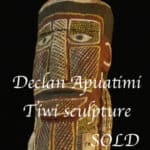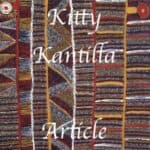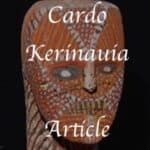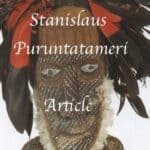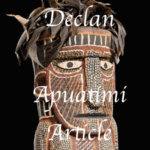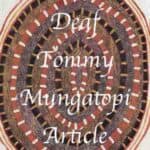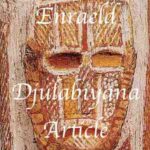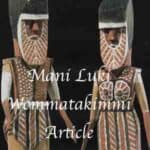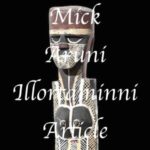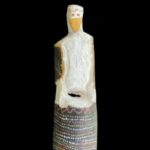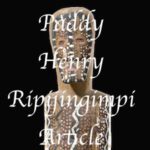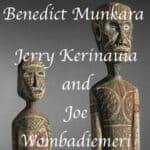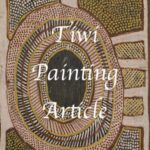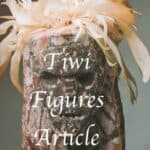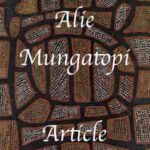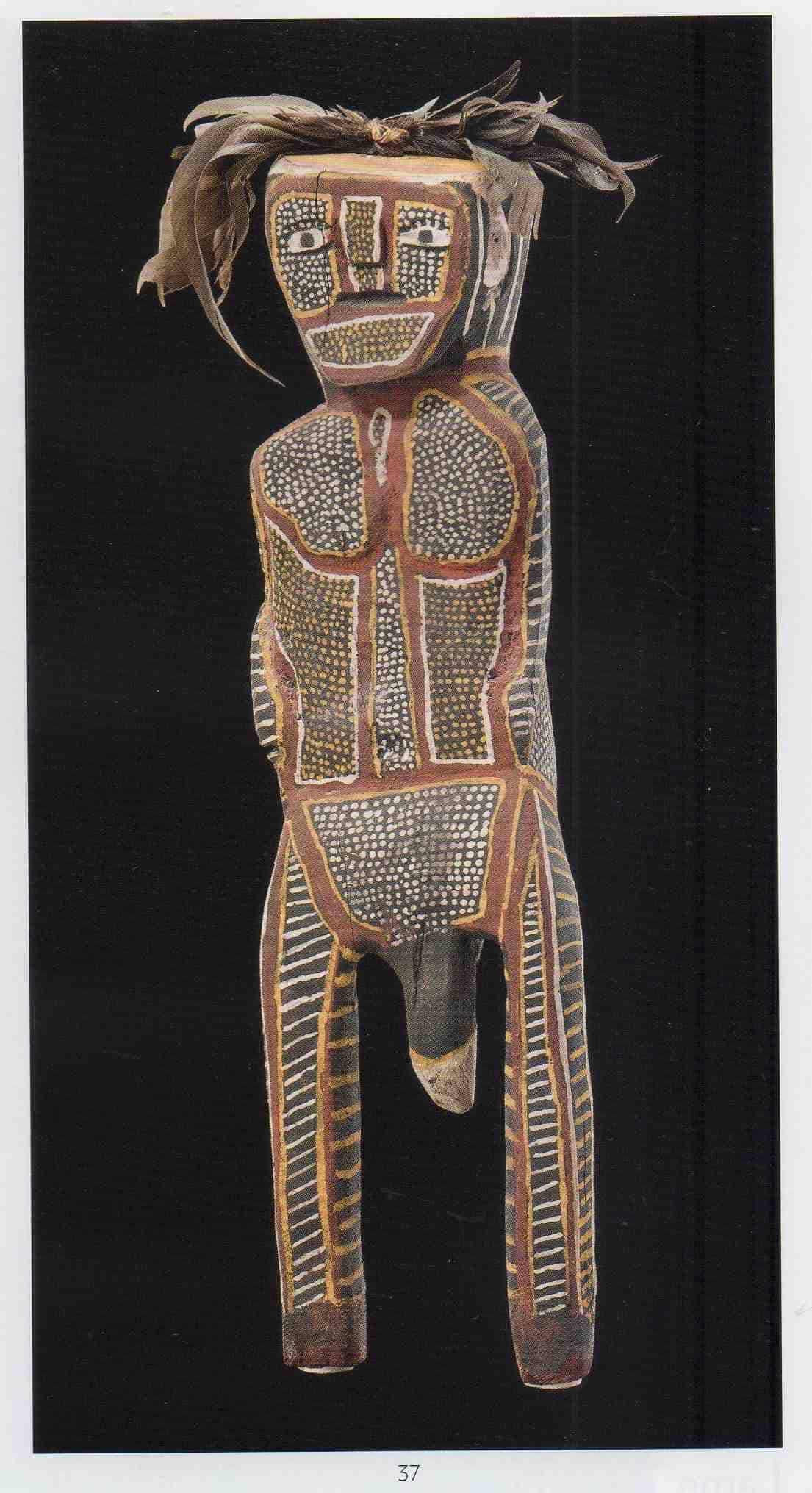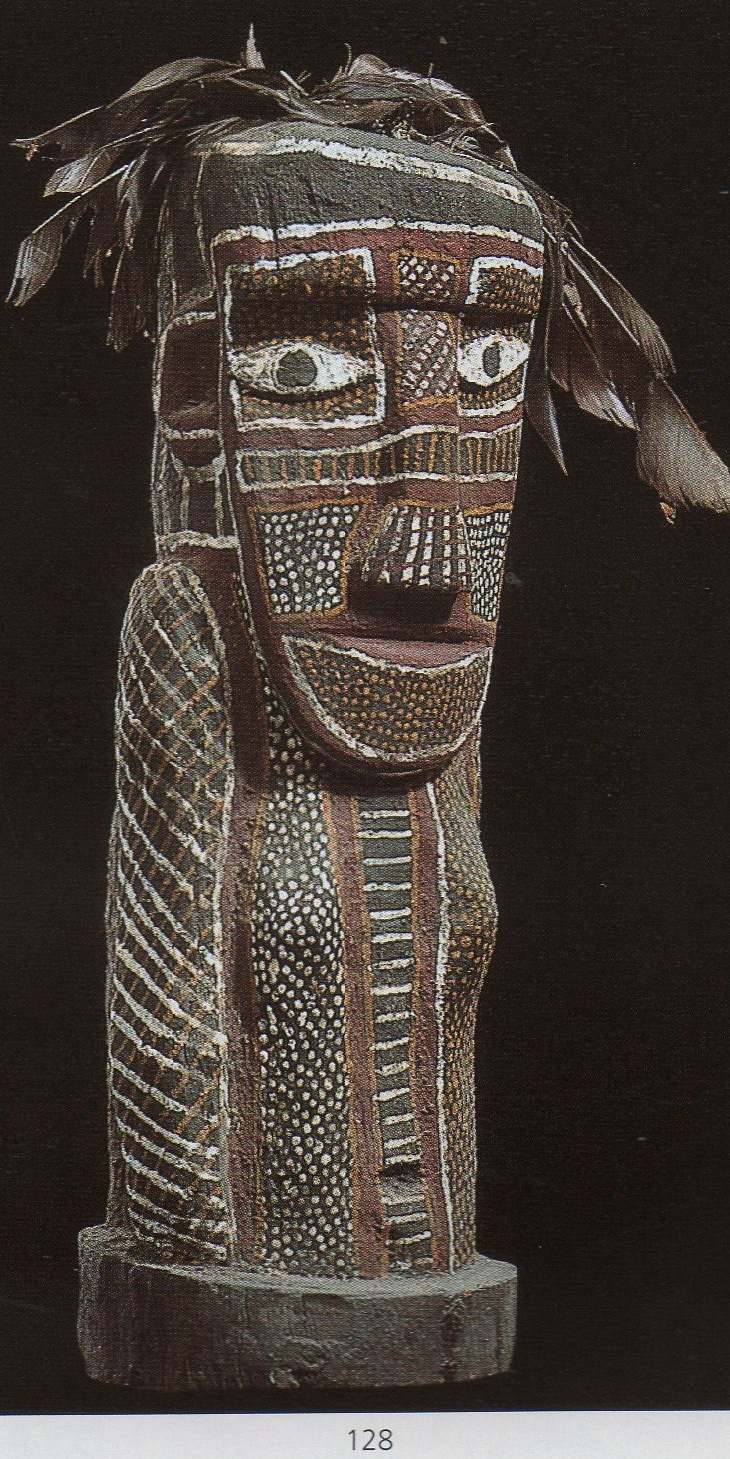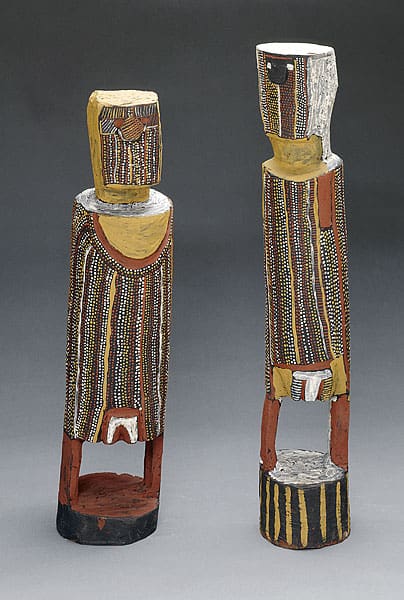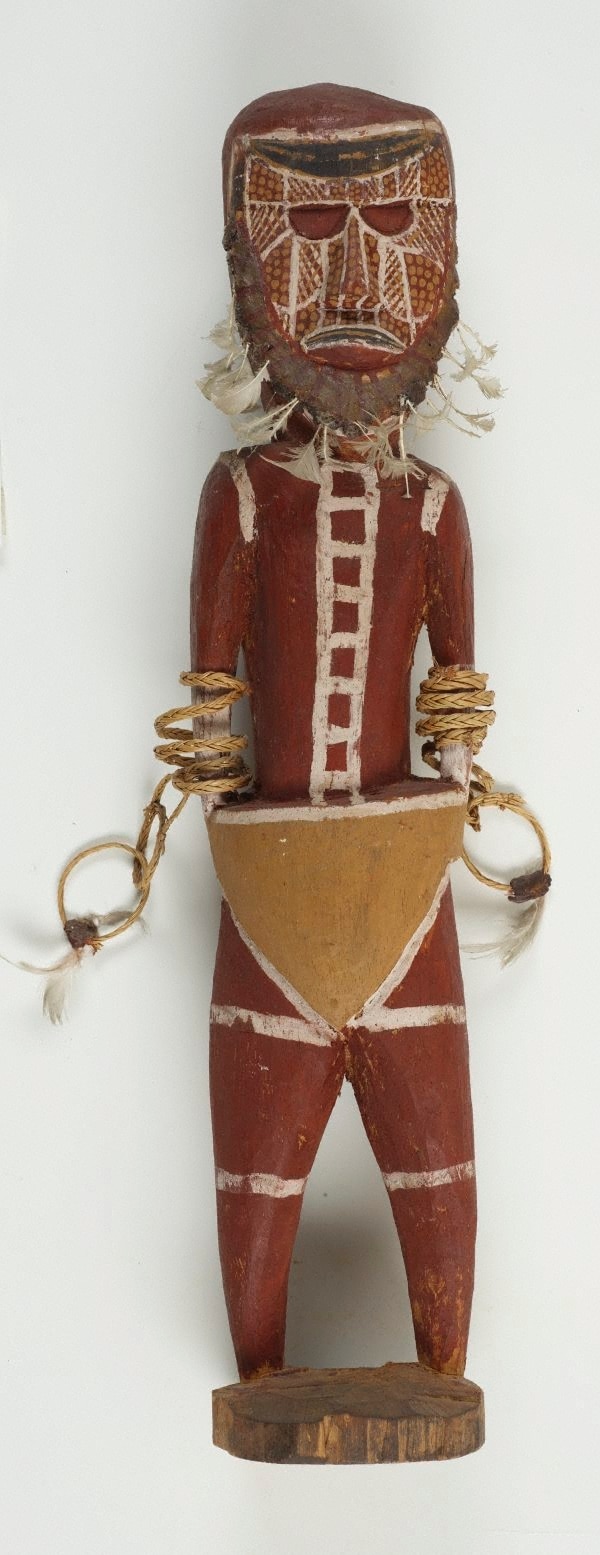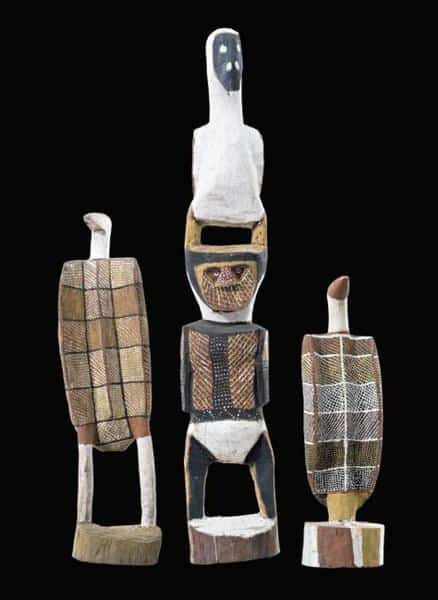Tiwi Art
Tiwi Art or tiwi Island Art is traditionally mainly painted sculptures or painted barks. Both Tiwi Sculpture and bark paintings can be very collectible. The Tiwi islands have had an ancient tradition of carving and painting burial posts called Tutuni. In the early 1960’s some of these skilled traditional carvers turned from carving burial posts to carving figurative works.
The aim of this article is to help readers determine if their Aboriginal Sculpture is a Tiwi Sculpture. It gives examples and links to major early artists.
I Buy Tiwi art both Sculpture and bark paintings. If you have one to sell I would love to see it. If you have a Tiwi Sculpture or bark painting and just want to know what it is worth please feel free to send me an image.
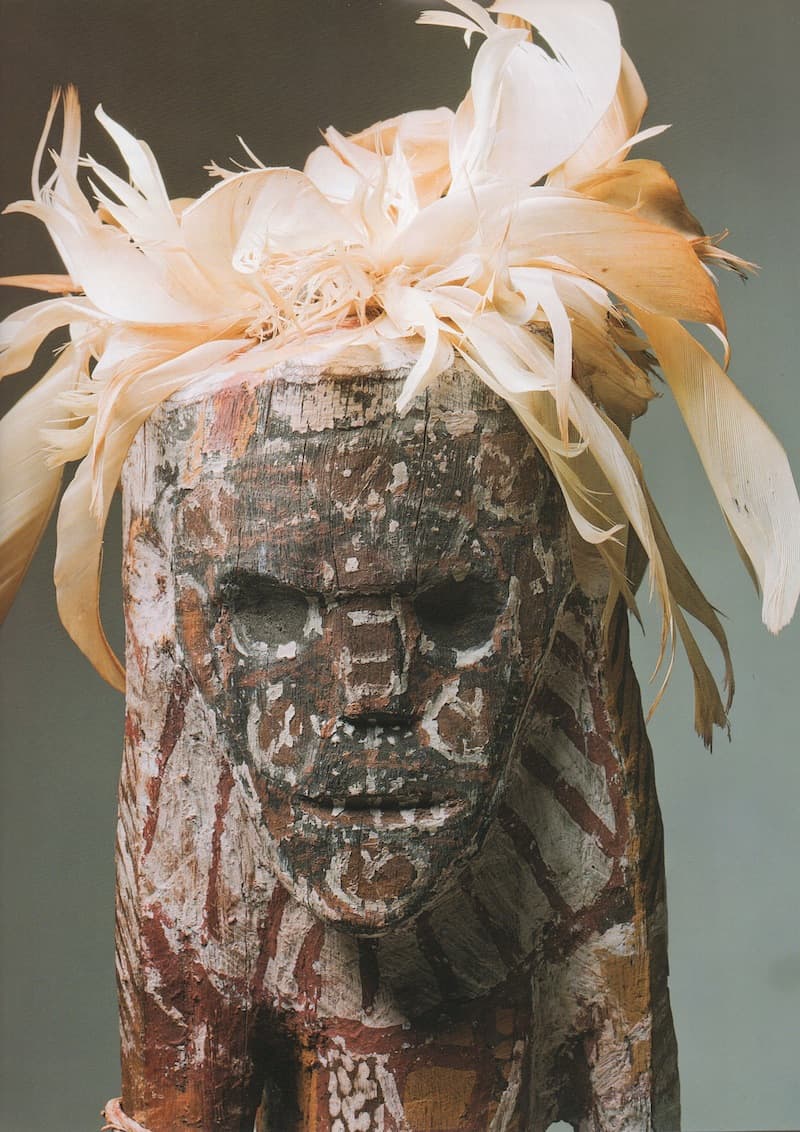
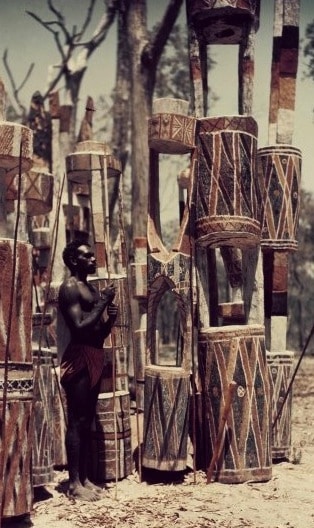
Traditional Tiwi Art
As early as the eighteenth century the Tiwi islanders carved three major objects. They carved burial posts spears and clubs, all associated with Pukumani Funeral Ceremony
Tutuni are Tiwi burial posts used for the Pukumani funeral ceremony. The in-laws of the deceased are responsible for making them. There are personal family influences in choice and decoration of the poles. These choice relate to the totems and skin painting traditions of the family of the deceased. Tutuni Poles are collectible in their own right
The spear is a dance adornment for key performers during a ceremony. Double barbed spears have the name Arawunikiri. Unilaterally barbed spears have the name Tunkaringa. Both are collectible in their own right.
Clubs were for both dance adornments and for fighting.
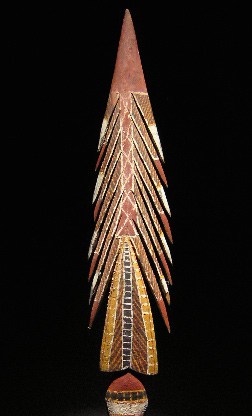
Tiwi Art Figurative Sculpture
The figurative sculptural tradition started in Paru in the 1960’s. Paru was on Melville Island but just across the strait from Bathurst Island Mission. The villagers of Paru traded with the mission, especially fish. They also traded some customary items like carved spears and painted mourning bags.
One large extended family group called the Mandimbula live in Paru. Cardo Kerinauia was the first Mandimbula to sell the mission a small carved wooden figure. Carving wood figures soon became a small village industry. It was a great success and many new pioneering Mandimbula artists emerged.
These sculptures were not strictly traditional. Anthropologists and visitors to the mission, however, were happy to buy the sculpture. The sculpture was of ethnographic importance. The designs on the sculpture are those found on body painting and have spiritual significance.
Some people think early Tiwi sculptures were very small and left next to the grave.
The spirit of the deceased would mistake the sculpture for a relative and haunt the sculpture rather than the sculpture’s owner. This theory has little-documented support.
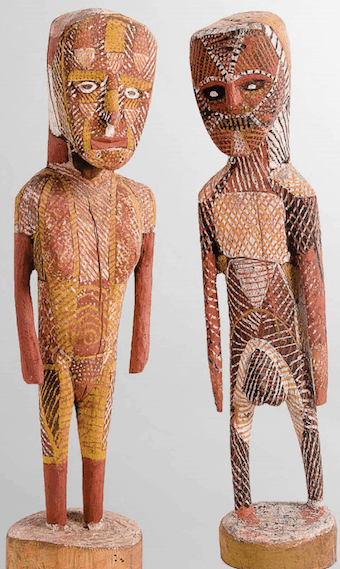
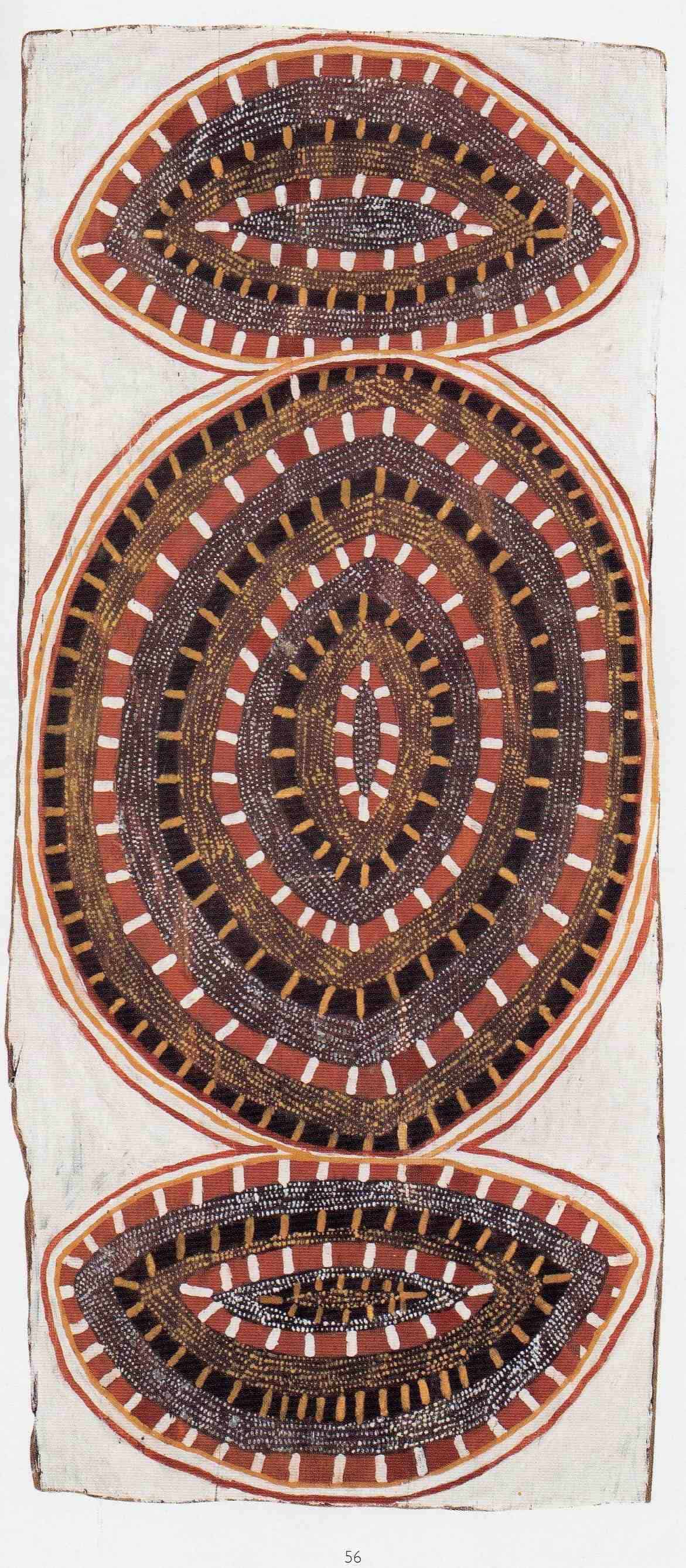
Tiwi Art bark painting artists and designs
Many of the best Tiwi bark paintings are of Pukumani Skin designs and come from the 1960’s. They are often on stringy bark and unsupported by framing sticks. Some of the most significant early bark painters from the Tiwi islands include Ali Mungatopi and Deaf Tommy Mungatopi. Although they did some sculpture the bulk of their art was on Bark.
These early bark paintings are quite rare and collectible. the best barks are of sacred skin designs and have early collection dates. Tiwi Artists decorate the surface of barks with symbolic patterns. They use kurluwukari (circles), pwanga (dots) and marlipinyini (lines). Jilamara is the name of the finished design. It literally means color or paint. The term is particularly used for body painting and Tutini decoration.
Pioneer Tiwi Sculpture Artists
Each early Tiwi Artist has distinctly different sculptures. Despite being one extended family and living in the same village design differences vary widely
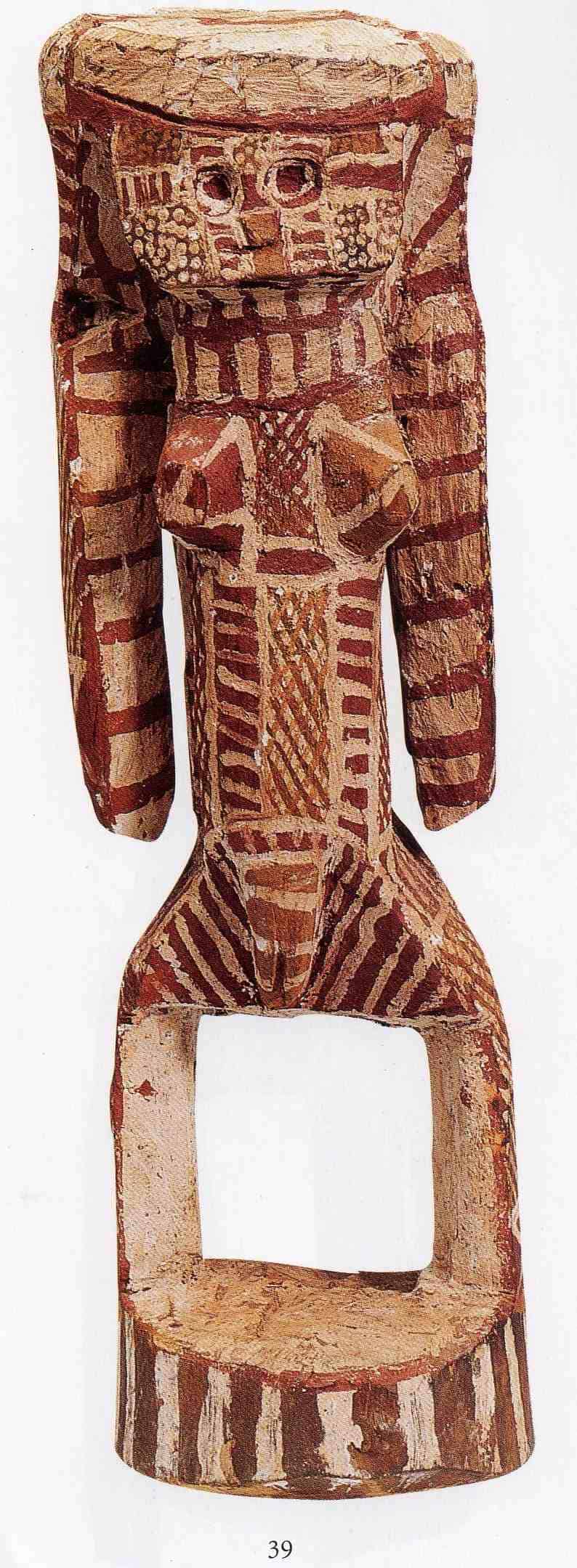
Enraeld Munkara
Enraeld sculptures are distinctive. He carved sculptures with the arms extend directly from a bulbous head. The legs of his figures run straight down from flared hips. He often leaves a defined negative space between the legs which resembles Pukamani grave posts. His carvings have a raw unrefined power to them. He paints them with the same designs as used as skin designs during ceremony
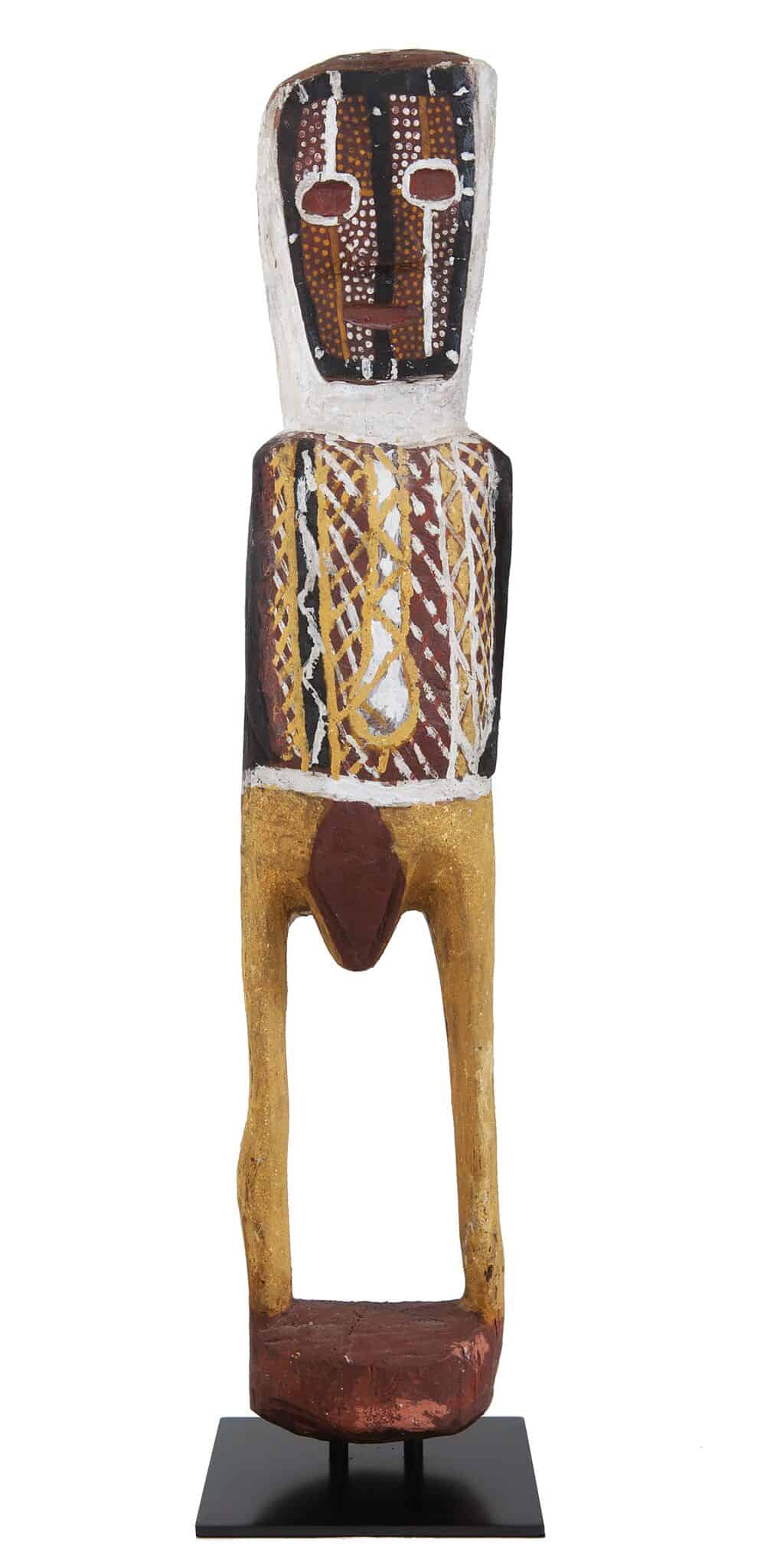
Paddy Henry Ripijingimpi
Ripijingimpi sculptures have a chunky and crude blocky appearance. The face has Incised eyes and mouth. His painting of the sculpture is often very fine. The sex on the figures is clearly shown. Paddy has also done several Pukumani posts. His carved and painted seabirds are very distinctive and although crudely carved are amongst the best-painted examples.
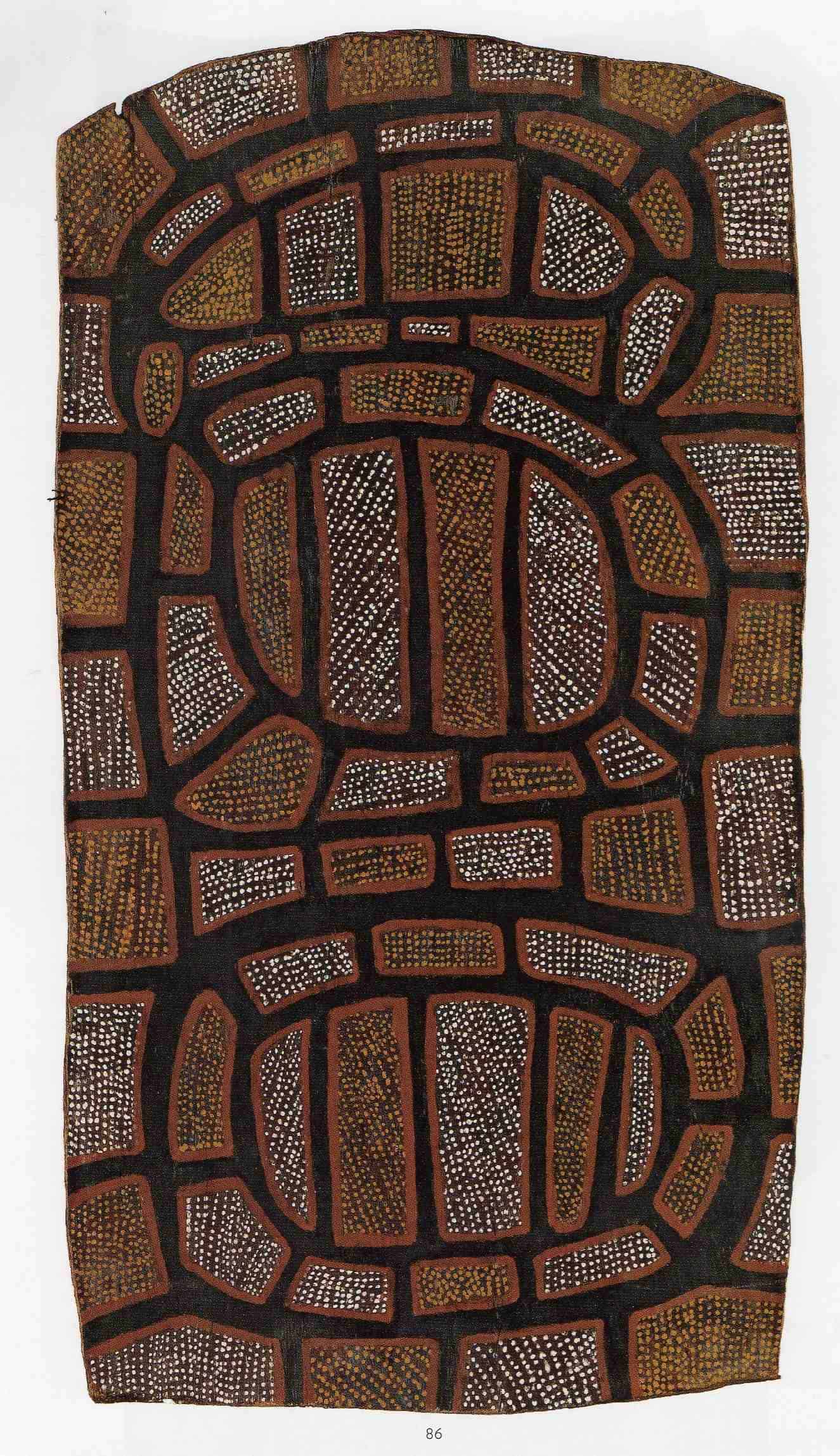
Alie Mungatopi
Unlike most Tiwi artists Alie Miller Mungatopi is better known for his bark paintings than his burial poles or figures. Many of his bark paintings traditional designs as those used on the skins of initiates. This makes his paintings very collectible.

Mick Aruni
Mick Aruni carved and painted figures and painted at least one bark painting. His Early sculptures clearly indicate the sex of the figures. his later figures either through mission influence or buyer preference do not. His early figures had arms carved clear of the body and were very well painted. He is also known to have carved birds and sculptures with birds on the head.

Cardo Kerinauia
Cardo sculptures clearly show the sex of the figures. His figures have the arms carved clear of the body. On his completed sculptures he paints the entire carved figure with intense body paint designs. His figures have broad shoulders tapering to a narrow waist.
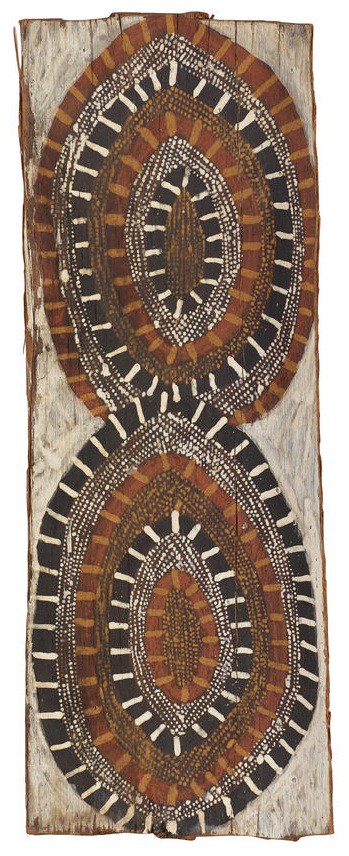
Deaf Tommy Mungatopi
You can tell Deaf Tommy work if you look carefully because he used a Pwoja comb to apply dots. This results in rows of around ten dots at a time to be perfectly aligned.
He often painted on a black or white background which results in a real pop of color.
His coral skin designs are masterpieces of Tiwi Art on bark

The Mungatopi brothers
Laurie Mungatopi and Lame Tobi Mungatobi are the lesser known brothers but still great artists. They were all ceremonial dancers as well as artists. The Mungatopi brothers are better known for their bark paintings. They did however do some important sculpture.
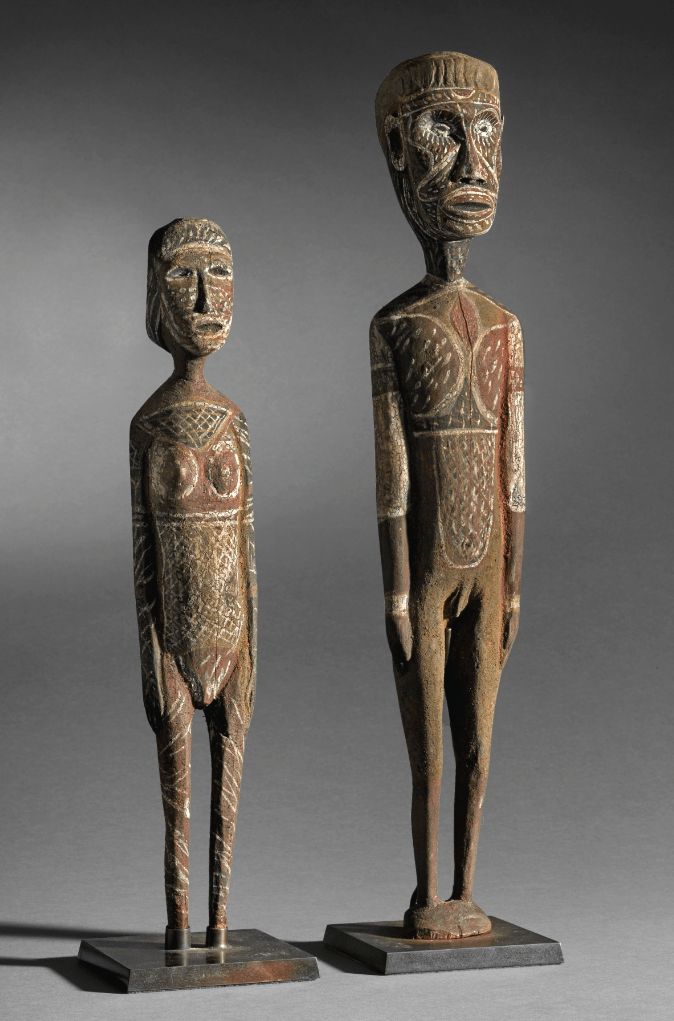
Benedict Munkara
Benedict Munkara sculptures have oversized heads of comparatively realistic Bodies. He did very few carvings but those that he did do are of great quality.
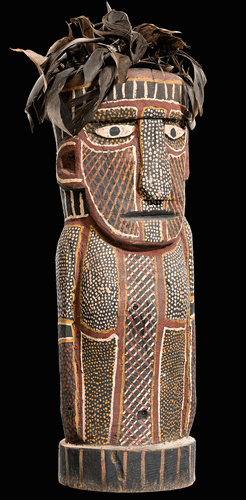
Declan Apuatimi
Declan Apuatimi sculptures are almost always in ironwood and often have heads the same size as the body. Sculptures are painted in designs associated with Pukumani ceremonies. They have distinctive almond-shaped eyes that are white, with black pupils. Declan also carved birds. They tend to have white bodies and are plainly decorated other than the wings. The wings are elaborately designed in motifs previously used for skin designs.

Kitty Kantila
Kitty Kantrilla sculptures have a chunky and crude blocky appearance. The face has a strong wide nose sometimes in a hexagonal shape. Her painting on the sculpture is often made up of lots of dots and blocks of solid color. All her earlier early indicate the sex of the figure. Kitty has also done several Pukumani posts and seabirds as well.
Tiwi Art History
Since the turn of the twentieth century, the Tiwi have had regular contact with the outside world. They have maintained and adapted many of their customary practices. The most important is the performance of their main ceremonies, the Pukumani and the Kulama.
The Kulama was once primarily an initiation ceremony for both men and women. Today its main function is promoting health and the regeneration of life.
The Pukumani mortuary ceremony involved a series of performances over a period of time after a person’s death. It concluded with the cutting of the burial pole tree. This burial pole was then erected at the grave site. All Tiwi are still expected to take part in these ceremonies. They should sing, dance and carve a Tutini (Pukumani pole) if commissioned by the deceased’s relatives. These Tutini funeral poles are the most famous Tiwi objects. Tutuni represents the body of the deceased or one of the ancestral beings.
Other distinctive items customarily made for the Pukumani ceremony included Tunga. Tunga are large painted bark baskets.
Many Tiwi artists also did Painting on Bark.
References and further reading
More Tiwi
Artworks and Articles
All images in this article are for educational purposes only.
This site may contain copyrighted material the use of which was not specified by the copyright owner.
Tiwi Sculpture images
The following images give a good idea as to the variety of early Tiwi Sculpture artists works.

